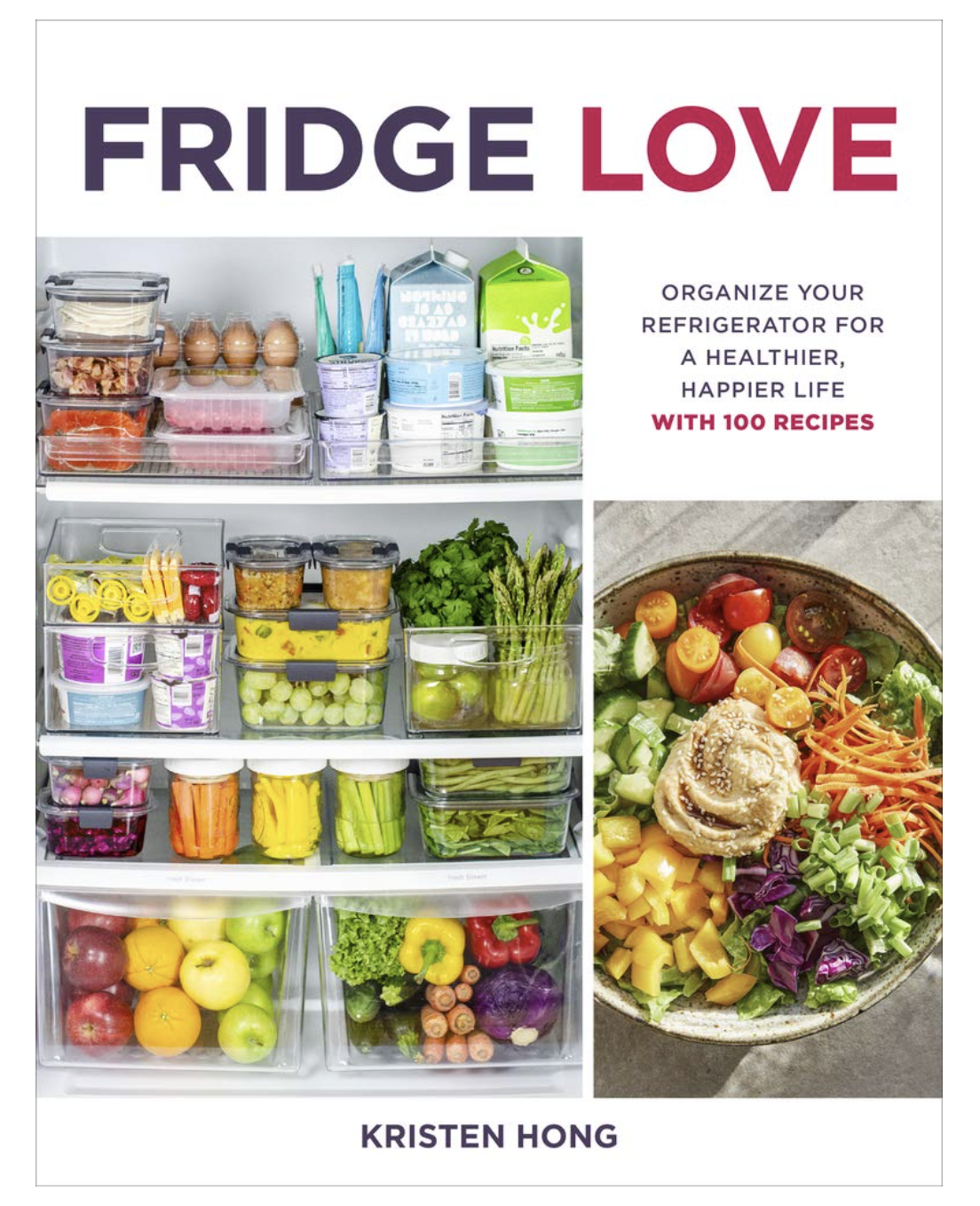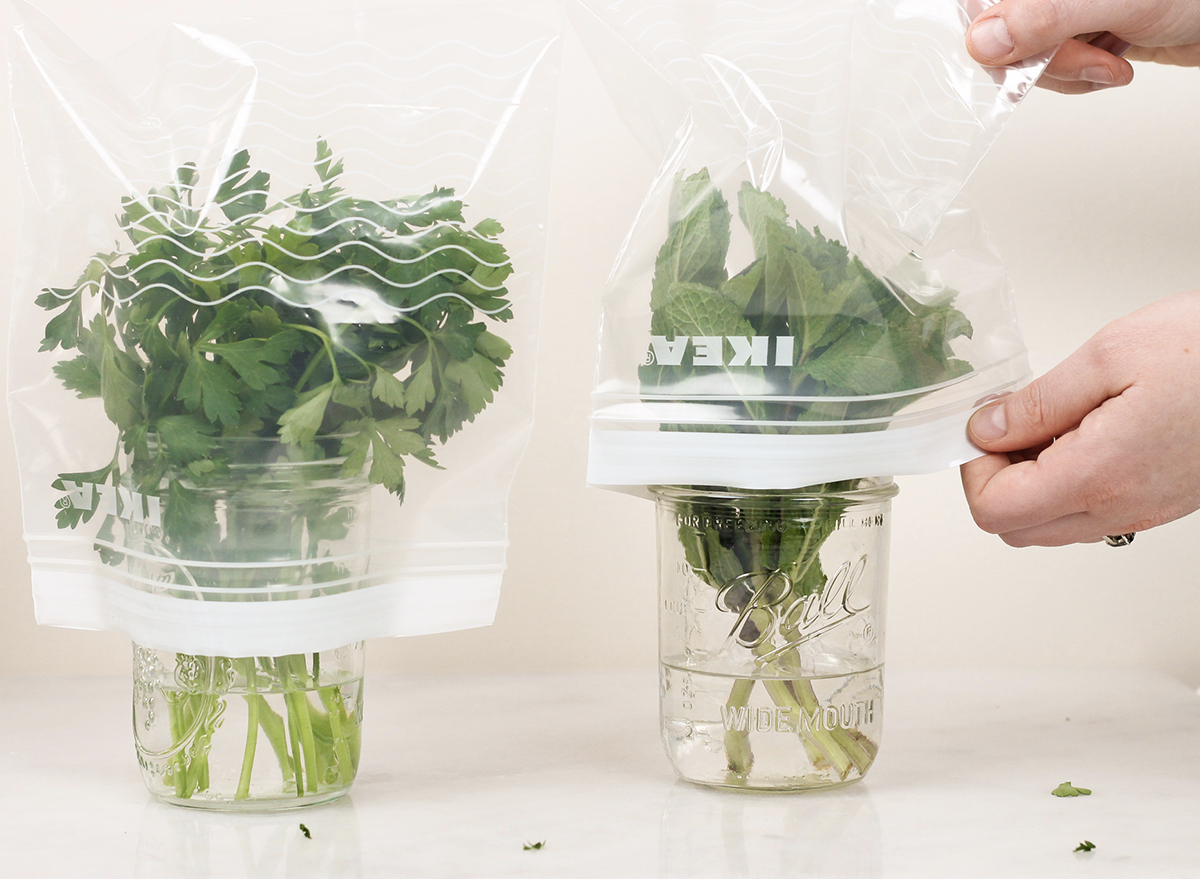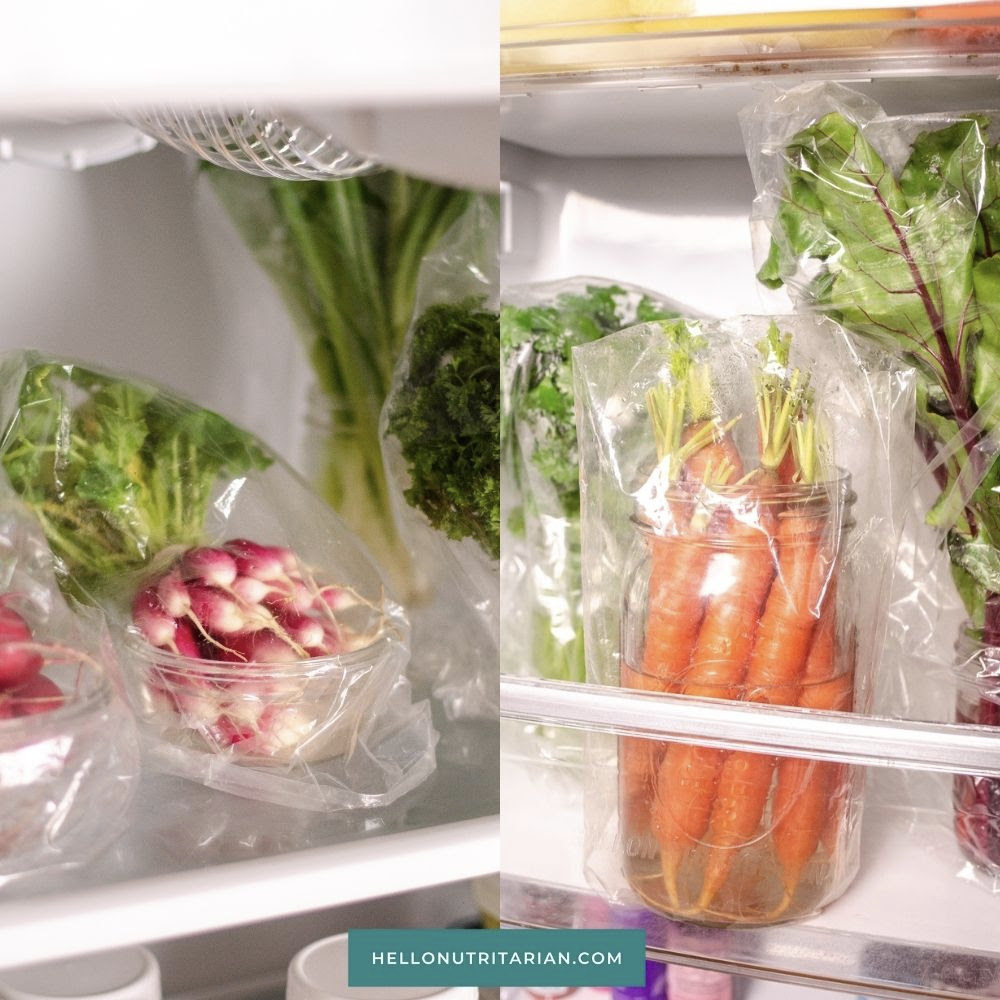What is Produce Tenting?
Before I answer the question, let me tell you about a SUPER helpful book I just found, FRIDGE LOVE: Organize Your Fridge for a Healthier, Happier Life (by Kristen Hong). In explaining her purpose in writing it, Kristen asks us a great question: “What if a single kitchen tool could help you eat healthier, cook more efficiently, reduce food waste, and stretch your grocery budget? And even better? It’s one you already own!”

I love that she talks about the refrigerator as a tool, and not just a cold storage appliance. And being an organization fanatic, I love how this book first teaches how to organize the fridge, and then how to organize your meal prepping. Score!
Kirsten’s promotionals for the book say “it’s your ticket to a smarter, better-organized, harder-working fridge that serves real-life needs. It reveals the secrets to optimal fridge organization (customizable to suit your lifestyle as well as your fridge’s model and configuration), plus shopping tips, storage guidelines, meal-prep strategies, the best storage containers, and more than 100 easy plant-based recipes!” Folks, what she says is true. This book is a keeper! (Apologies for the info-mercial, but I had to share. DISCLAIMER: I’m in no way affiliated with her nor is Cook’n.)

OK, now to the topic of tenting produce. Kristen does a blog (www.hellonutritarian.com) in which she shares her tips and techniques. One of her readers read the advice to tent certain produce and tried it. After 9 days of tenting her fresh parsley, this reader sent Kristen a picture of the result:

I know that if my parsley had been crammed in a crisper drawer for that same amount of time, it sure wouldn’t have looked like that in the picture. Turns out, tenting is like building a little terrarium for your produce. The technique fosters freshness!
Kristen says there are three components to tenting:

With all this said, it’s helpful to know which produce works best for tenting: fresh leafy herbs like cilantro and parsley, but not basil. Sturdy veggies like asparagus, celery, carrots, green onions, radishes. And hearty greens like chard, collard greens and beet stems (but not lettuces or tender greens)
If tenting is something you’d like to try, here’s Kristen’s HOW-TO for cilantro and parsley:

It’s the same process for sturdy veggies/leafy greens with the exception that you will need to change the water more frequently—every 3 days is best. And, as with cilantro or parsley, when storing leafy greens, be sure none of the leaves are in the water.
I’m all for any technique that protects produce freshness and helps us avoid waste. So let’s go tenting!

I love that she talks about the refrigerator as a tool, and not just a cold storage appliance. And being an organization fanatic, I love how this book first teaches how to organize the fridge, and then how to organize your meal prepping. Score!
Kirsten’s promotionals for the book say “it’s your ticket to a smarter, better-organized, harder-working fridge that serves real-life needs. It reveals the secrets to optimal fridge organization (customizable to suit your lifestyle as well as your fridge’s model and configuration), plus shopping tips, storage guidelines, meal-prep strategies, the best storage containers, and more than 100 easy plant-based recipes!” Folks, what she says is true. This book is a keeper! (Apologies for the info-mercial, but I had to share. DISCLAIMER: I’m in no way affiliated with her nor is Cook’n.)

OK, now to the topic of tenting produce. Kristen does a blog (www.hellonutritarian.com) in which she shares her tips and techniques. One of her readers read the advice to tent certain produce and tried it. After 9 days of tenting her fresh parsley, this reader sent Kristen a picture of the result:

I know that if my parsley had been crammed in a crisper drawer for that same amount of time, it sure wouldn’t have looked like that in the picture. Turns out, tenting is like building a little terrarium for your produce. The technique fosters freshness!
Kristen says there are three components to tenting:
- Increasing your produce’s visibility by moving it from the crisper drawer to a place in the fridge where you’re more likely to see during the week.
- Placing the produce it in a jar with some water. This allows it to get all moisture it needs to stay hydrated and fresh.
- Covering the produce with a protective bag. This is critical; a covering defends your produce from the fridge’s drying, cool air. Moisture loss is the cause of all produce wilt!

With all this said, it’s helpful to know which produce works best for tenting: fresh leafy herbs like cilantro and parsley, but not basil. Sturdy veggies like asparagus, celery, carrots, green onions, radishes. And hearty greens like chard, collard greens and beet stems (but not lettuces or tender greens)
If tenting is something you’d like to try, here’s Kristen’s HOW-TO for cilantro and parsley:
- Trim off about 1/2 inch from the bottom of the stems and remove any small leaves that will have contact with the water.
- Place in a jar filled about a third of the way up with water. You can also use a bud vase or even a coffee mug!
- Cover loosely with a plastic bag, old bread bag or reusable silicone bag.
- Change the water every 4 to 5 days.

It’s the same process for sturdy veggies/leafy greens with the exception that you will need to change the water more frequently—every 3 days is best. And, as with cilantro or parsley, when storing leafy greens, be sure none of the leaves are in the water.
I’m all for any technique that protects produce freshness and helps us avoid waste. So let’s go tenting!
Sources:
- www.hellonutritarian.com
- www.eatthis.com
 Alice Osborne
Alice Osborne
Weekly Newsletter Contributor since 2006
Email the author! alice@dvo.com
